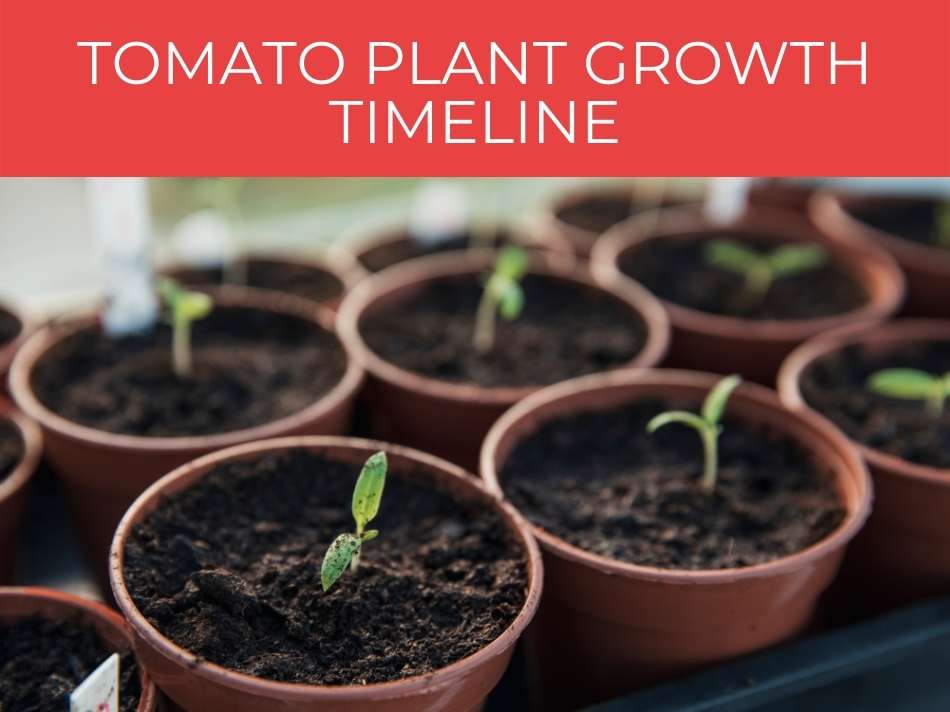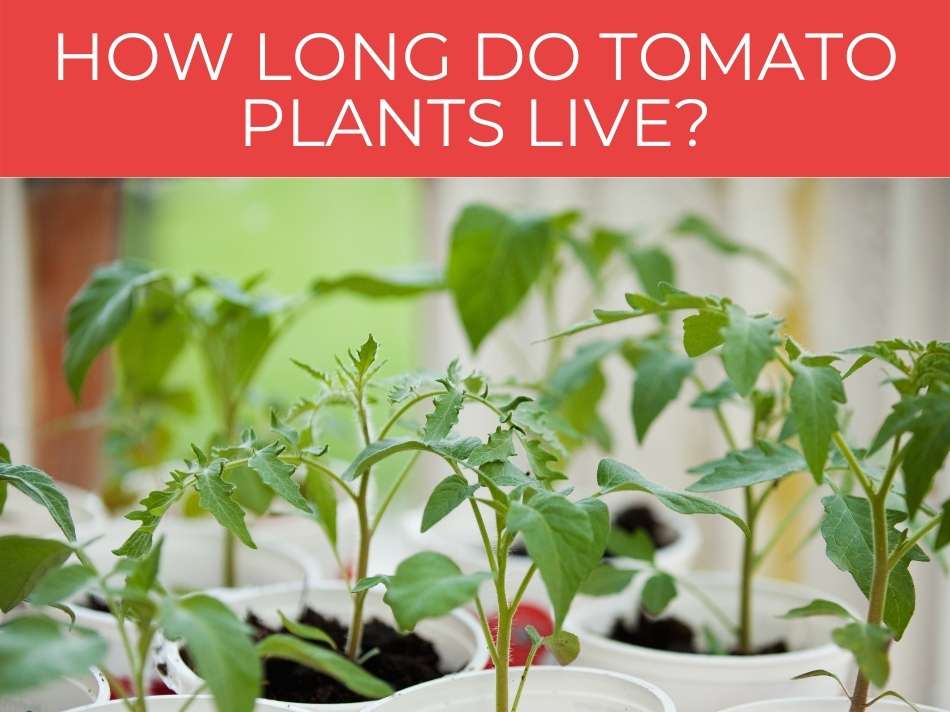If you want fresh tomatoes on hand whenever you need them, start the process by learning about the tomato life cycle. This will guide and equip you with the valuable knowledge needed to create the perfect tomato growing conditions.
The tomato plant’s life cycle starts from seeds, and as the plant grows and matures, flowers develop. Sexual reproduction occurs, and after pollination and fertilization, tomatoes develop, which also contain seeds, allowing for the tomato life cycle to start again.
It may be worthwhile to learn how to grow your own tomatoes, as they are full of nutrients and bring fantastic flavor to various meals. Tomatoes keep well and may be refrigerated and bottled, used to make homemade sauces and chutneys, and dried or sundried.

Tomato Life Cycle
The tomato plant life cycle is divided into 3 stages: leaf, flower, and fruiting. First, the root develops, then the seed sprouts. Next, the first leaves grow. As the plant ages, it produces more mature leaves and blossom buds. Flowers appear on mature tomato plants, awaiting reproduction.
Every tomato seed has a tomato plant inside that germinates when conditions are ideal.
Each has its own growth habits and development requirements.
During the leaf stage, stems and leaves develop, requiring nitrogen to do so.
Ensure your tomato plant is getting the proper nutrients to produce a bountiful crop.
See what type of soil is best for your tomatoes.
Tomatoes are annual plants, meaning they develop from a germinating seed to a plant-bearing fruit-carrying source in a single season.
The female reproducing organ, the ovary, is at the base of this area.
The ovary houses the ovules.
Once the ovules become fertilized, an embryo can develop and form seeds that are found inside the tomato fruit.
A tomato flower is sometimes called a perfect flower because both male and female organs are included in the same flower.
The ovary inside the flower grows into the tomato that we consume.
The stamens, petals, and stigma dry up and drop away as the tomato matures.

Tomato Plant Growth Timeline
With work and knowledge of the plant’s life cycle, growth inhibitors, and how to extend its life, you can cultivate a robust crop of tomato plants. Using the right soil for your tomato plants might also help them develop faster.
Tomato plants go through four phases of growth, from seed to fruit. Their lifespan depends on their variety, growing area, and care at each step.

Stage 1: Planting the seeds

Stage 2: Leaf Formation

Stage 3: Flowering

Stage 4: Tomato Formation
Tomato seeds should be sown 6-8 weeks before the latest frost date since warm soil promotes germination.
Plants approximately 6-10 inches tall with purple leaf veining are ready to be put into the ground once the fear of frost has gone.
Every two weeks, young plants double in height, generating new leaves and roots before sprouting stems and blossom buds when they reach 12-18 inches tall.
In commercial greenhouses, tomato plants are typically grown in 1-year cycles.
The first little yellow blooms develop in late spring/early summer, and you will need the use of trellises or poles to support them.
Pollination may suffer because of temperature fluctuations, and flowers may drop.
Blossoms disappear, leaving budding baby tomatoes with pea-like development.
Over 40-50 days, the fruit will remain green until becoming pink, yellow, or orange, depending on the type, before reaching full maturity by 70-80 days.
In addition, there are lots of different tomato varieties, for nearly any growing condition.

How Long Do Tomato Plants live?
Tomato plants grow shoots after generating their first cluster of healthy fruit.
If clipped, it will divert growth to the growing tomato. So instead, keep them and root them in water.
A tomato plant lives for one season, about 6-8 months when it’s grown outdoors. But if you nurture the plant indoors in its ideal conditions, your tomato plants can live for 2-5 years. However, tomato production usually decreases with older plants.
If you propagate healthy cuttings and plant them, you can extend the plant’s life even longer.
Take good cuttings from your tomato plant, root them in different spots, or “propagate” them to help the plant live on.

Can Tomato Plants Live Year-Round?
Tomato plants can indeed live year-round, so long as they receive ideal conditions. Greenhouse-grown tomato plants with controlled temperatures, humidity, and protection from direct sun and pests can live for up to 3 years. Older plants usually produce fewer tomatoes.
Tomatoes are tender yet hardy and thrive in temperatures between 70 and 80 degrees Fahrenheit and no lower than 60 degrees.
If it’s too cold or hot, the vines may not produce flowers and tomatoes.
Most of the tomatoes ripen simultaneously, and then the vines wither and die after the first frost.
Hydroponics is a method of growing plants with no soil.
Other media, such as rock wool, coconut fiber, perlite, or lightweight expanded clay aggregate, are used instead of soil.
Feeding hydroponic tomato plants is achieved by adding a fertilizer solution to the water.
See how you can grow tomatoes hydroponically.

Can Tomato Plants Come Back To Life?
If your tomato plant appears to be dying or has yellowing leaves, it may be due to not getting the attention it needs.
Make sure your tomato plant receives adequate sunlight, fertilizer, and water.
Transplanting your tomato plant may help it recover.
Suppose you detect any changes in the tomato plants’ appearance, such as wilted leaves or yellowing, keep a watchful eye on them for a few days before taking action.
See what to do if your tomato plant leaves are yellowing.
Whether your tomato plant can be revived depends on the severity of your plant’s damage. It should take less than a week for your plant to recover if it is dying because of a lack of care. However, if your tomato plant has been infected and needs to be transferred, this process might take longer.
If a week has passed and your tomato plant shows no signs of recovery, then transplanting the plant may help.

The Life Cycle of a Tomato Hornworm
Tomato hornworms are giant caterpillars with horn-like tails, and tomatoes are their favorite plant.
The hornworms eat the leaves of plants and can entirely defoliate them.
They may also eat the tomato and gnaw holes in it. Don’t risk your tomato plants being destroyed by tomato hornworms!
Tomato hornworms have a life cycle similar to butterflies. Both go through a complete metamorphosis, from egg to larva to pupa to adult. A hornworm takes around 30 days to grow from an egg to an adult at 27° C (81° F).
Lower temperatures may cause the development time to be extended to 39 to 48 days.

